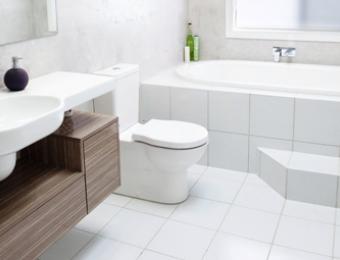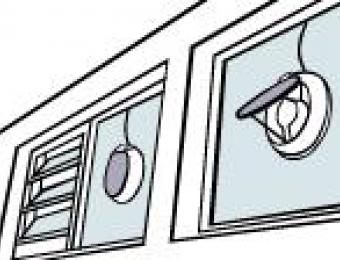Adequate heating is vital to most bathrooms in Australia as it provides warmth while dressing and drying off, helps with drying out the bathroom after use and stops the pipes from freezing during the winter in colder locales. Heat can come from many different sources, with each requiring a slightly different setup. The positioning of your ventilation fan will also play a key role in the heat circulation of your bathroom.

Dedicated heat lamps
Heat lamps are a great way to heat a smaller bathroom as they are instantly hot when switched on. With the right heat lamp you can raise the air temperature quite significantly in a very short period of time. They lose some of this efficiency over larger areas because of the location of the heater; the air around the heater rises as it is heated, but because it is ceiling mounted, the air has nowhere else to go but down. If the ceiling is too large, the air cools before it reaches the edges and only heats in a localised area. Additional heat lamps can overcome this issue.
Heated towel racks
Heated towel racks are a currently popular method of meeting your bathroom heating needs. The racks are quite large and radiate heat outwards through the rails, passing through the towel and warming the air around it. Positioning is key here as they can take some time to warm up the air around them, so if you’re having a quick shower and then jumping out again, you will want to ensure it is located in a place that is comfortable for you to stand in front of and dry out. Again, these are recommended for smaller bathrooms as they will struggle to adequately heat a larger space, but either way they're great for keeping towels warm and dry.
Permanent bathroom heaters
Those with bigger bathrooms may want to consider installing a permanent heater, such as a radiator or bar heater. These can be mounted in or on the wall and wired up with your light switches to keep all the controls in one place. Radiator heaters will work best lower down, and can safely be installed at a lower height without the risk of burns. In contrast, bar heaters should be placed higher up for safety reasons, as they put out a lot of heat and can cause nasty burns from the slightest brush against them.
Under floor heating
For the ultimate in heating luxury, you may want to look into under floor heating. By heating the floor from underneath, the heat radiates upwards, warming the coldest air and the bathroom tiles first. This can be expensive to set up but will last a long time and adds a great deal of value to a property. Large electrical coils or hydronic pipes are set to cover the entire floor space, seated on top of a layer of insulation to protect them from the chill of the concrete foundation, and finally covered with a moisture barrier.
With an electric setup, the coils heat up when switched on, which transfers heat up through the floor. If you have hydronic electric heating, hot water flows through under-floor piping to achieve the same effect. The only thing that can really go wrong with this arrangement is water somehow finding its way into an electrical under-floor heating set up, so you will want to take extra care with drainage and flooding safeguards. Other than that, once installed under-floor heating is normally maintenance free.





